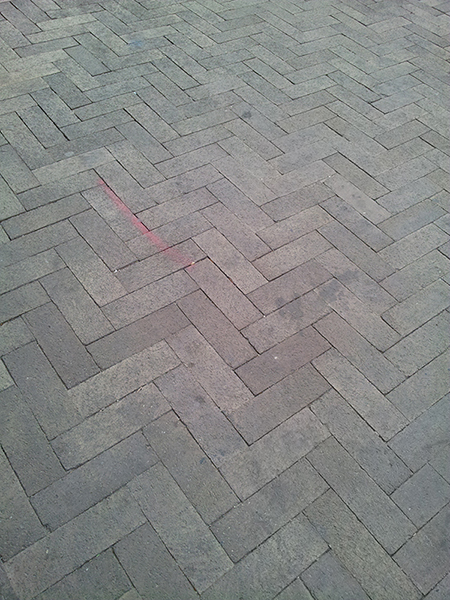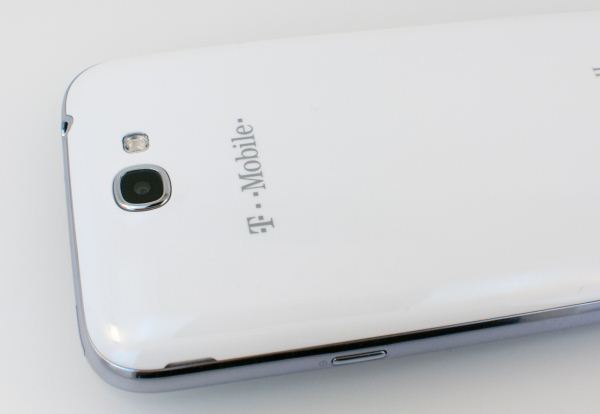Samsung Galaxy Note 2 Review (T-Mobile) - The Phablet Returns
by Brian Klug on October 24, 2012 9:00 AM ESTThe Galaxy Note 2 is very much an enlarged, slightly tweaked Galaxy S 3, and nowhere is this more evident than the camera system. In fact, after lots of digging I’ve determined that almost all of this is exactly the same as the Galaxy S 3, which isn’t a surprise at all. Samsung has tweaked the camera UI and added features, and compared to the Note there’s definitely a marked improvements, but for Galaxy S 3 users the experience is entirely the same.
To start, the Galaxy Note 2 uses the same 8 MP S5C73M3 CMOS as Galaxy S 3 on the rear facing camera, which is a CMOS which on paper has specs up to par with the competition. There's no official disclosure about this part, but people still know about the specs. Optical format is 1/3.2" which is very common right now, 1.4µm square pixels, and of course the sensor is backside illuminated. From what I can tell the optical system on top of that is exactly the same as well, F/2.6 with a focal length of 3.7 mm. From what I’ve seen of the Galaxy Note 2 camera, performance is as expected basically the same as Galaxy S 3.
Likewise the front facing CMOS is a S5K6A3, also same as Galaxy S 3, which is 1/6" format with 1.75µm BSI pixels and a total size of 1412 x 1412 pixels. Captured images end up being 1280 x 960, F/2.8 with focal length of 2.5 mm.
.gif)
Milbeaut ISP Roadmap
In addition, Samsung continues to use a discrete Fujitsu Milbeaut 5th generation ISP (Image Signal Processor) for their cameras, you see references to this as M5MO throughout. This is the same setup as I saw on the Galaxy S 2, and though I didn’t dig into the original Note I bet it’s there too since that camera was analogous. There wasn’t much of a jump in camera performance between the Galaxy S 2 and 3, it seems as though Samsung is largely content keeping things the way they are this generation, perhaps waiting for the next generation of the Milbeaut ISP or a dramatically different CMOS to come around from Samsung Semiconductor before they mix things up. Meanwhile F/2.6 isn’t the most aggressive target for a fast optical system, considering other players are at F/2.0. I think Samsung expects those interested in a smartphone with emphasis on camera to go after the Galaxy Camera or something.
 This sign just comes off sounding so sarcastic (sample Galaxy Note 2 Photo)
This sign just comes off sounding so sarcastic (sample Galaxy Note 2 Photo)
To evaluate still image quality we turned to our standard set of tests which seems to keep growing. That consists of a scene in a lightbox with constant controlled illumination of 1000 lux taken using the front and rear cameras with as close to the same field of view as possible, images of a distortion grid, GretagMacbeth ColorChecker card for white balance checking, and an ISO12233 test chart for gauging spatial resolution in an even more controlled manner. Because I’ve moved houses and lighting will never ever be exactly the same, I have decided to move the three test charts into my lightbox as opposed to putting them on a wall and illuminating them with studio lights. This warrants a completely new set of comparison images, hence the smartphone 2012 camera bench for the three charts and front facing camera.
There’s a lot to go through here, but the test charts tell the most objective story. To me, flipping back an forth between Galaxy S 3 and the Samsung Galaxy Note 2 confirms what I already know, that performance is very similar between the two because they’re basically the same system. Locations 3–7 remain in the bench photo locations, and unfortunately due to time constraints I could only get photos on the one day I was in town with some overcast skies and not the usual lighting I like.
Honestly probably the biggest improvement over the original Note is that the center purple colored spot is completely gone as you can see with the following toggle.

Samsung’s camera UI continues to be very comprehensive and offer a wealth of options and shooting modes. I spent a lot of time playing around with HDR, which now has a Normal and Strong mode that adds even more dynamic range with exposures bracketed even further from the center. There are a couple of those in the MISC gallery of camera shots.

































































131 Comments
View All Comments
barry spock - Thursday, October 25, 2012 - link
The longer I spend think about my own subjective limitations, the more I realise that the products from anyone but apple aren't getting a fair go.And this one's an interesting product to attempt to not pigeonhole. I'd think of it more as a media device than a phone. And so does the rest of south korea, as I watch them using these things on the subway -- they watch tv on them. They make calls using earbuds -- not holding a thing this size to their heads. And they rarely put it in their pockets -- it goes in a handbag (or a manbag)
The bit about it not fitting in the F-150's "big Gulp" plastic cup holder speaks volumes about the culture it was written in.
Different cultures will use these devices differently. I imagine Samsung won't fret if this isn't taken up in droves in the US, because after all, there's always china.
Also, Anand, et al. *please* give us the ability to mod-down thoughtless comments such as the first one attached to this article.
CeriseCogburn - Friday, February 1, 2013 - link
Please give us the power to wipe out the idiots who are stupid enough to double post, as if their comments are better than others comments, and as if we need to see them.Paulman - Thursday, October 25, 2012 - link
"One of the biggest factors young tech reviewers like myself forget is that visual acuity does diminish with age as the crystalline lens loses its ability to flex and accommodate, thus reducing how close one can focus."Ha ha, this is an optical engineer's way of explaining that old(er) people need reading glasses :P I had to wikipedia this, but apparently the medical term is "Presbyopia" http://en.wikipedia.org/wiki/Presbyopia
Can't wait for the next episode of the Anandtech Podcast, Brian!
galaxynotetoo - Thursday, October 25, 2012 - link
Every feature that Galaxy Note 2 has, can be found in bigger screen tablets expect for the ability to make calls. The other big screens cost fraction of what Galaxy Note 2 costs. eg : 199 for Google Nexus, 329 for iPad mini. Why pay $700 for this crap Galaxy note 2 ?Visual - Thursday, October 25, 2012 - link
Firstly, the obvious thing - to make calls. Duh.Secondly, no, it's not every feature. Pressure sensitive active pen digitizer is not found on any other current ARM tablet, and is a serious plus for some applications, i.e. drawing or even just handwriting. There's a reason it is called Note.
Spunjji - Thursday, October 25, 2012 - link
You really created an account here just to say that? :|Miniaturisation doesn't come cheap. Fact is, though, they're probably taking decent margins on this too. We can thank Apple for setting up that pricing expectation and capitalism for making sure every other company follows suit.
VooDooAddict - Thursday, October 25, 2012 - link
Been the first phone I've been excited about hitting sprint since the Palm Pre.Soon as it's available it will be replacing the launch Pre I'm still using.
liffey - Thursday, October 25, 2012 - link
"Switching back and forth between the stylus and fingers for using the basic Android interactions is annoying"Um you do know that you can invoke the menu and back command with the S Pen, right? Hold the button and swipe left for "back", and swipe up for "menu" (while holding the button, of course).
996GT2 - Thursday, October 25, 2012 - link
iPhone 5 screen resolution is 1136 x 640, not 1136 x 960 as listed in the table.cokata - Thursday, October 25, 2012 - link
the razr i has been mentioned and benched here and in the ip5 review and at least on the cpu side of things it looks like the only good competition to the A6